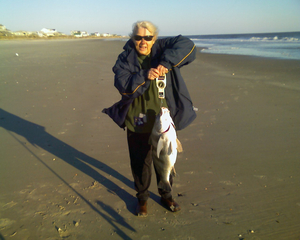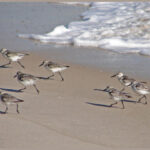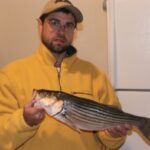Surf fishing often conjures up a very romantic picture for many fishermen, one of a long angler standing on a long beach, waves crashing in the sand, making a cast of 500 yards to reel in a big striped bass or mighty red drum.
Actually, surf fishing in most places is nothing as romantic as the post cards make it and the majority of anglers would be just as happy with a 3 pound fish as they would with a 30 pound one. Still, surf fishing is rewarding experience well worth the effort. Even for a hands-on sport, it is a very interactive type of experience.
You will need the proper gear to go surf fishing. A popular image exist of the Cape Hatteras-style angler in pursuit of monster drum, striped bass or bluefish using old-style conventional reels to cast rigs holding weights as big as bowling balls. In fact, most surf fishermen on most beaches use decent heavy to medium spinning tackle to throw about three ounces of weight and get it where they need to go.
Some days will call for a heavy sinker during a very strong tide, but if you’re using six ounces of lead to hold the bottom, you might think about pier fishing before you collapse from the strain of casting. Also you don’t need to use a rod as long as a telephone pole. A ten-foot rod is plenty long enough to get your line above the breaking waves, although twelve foot is probably the most common surf fishing rod available.
A common spinning reel holding 20-pound test line will handle just about anything you will encounter surf fishing.
Many surf fishermen are obsessed with casting distance, and this has become an art to itself with fancy rotating swings, guys practically dancing on the beach to get their rig out farther, and even tournaments for length. In reality, for most surf fishing ultra-long casting distance is missing the point.
Fish feed in the surf, and just beyond it. The surf is where you will be standing to cast. Those who cast a thousand miles away miss out on the chance to catch a lot of fish.
Rarely will you be fighting a monster fish in the surf. Most fish landed on the beach are panfish-fish like croaker, pompano, spot, croaker, flounder or small to medium bluefish, trout, or red and black drum. These fish won’t provide you with an epic battle but can provide you with a great seafood meal. All of these fish come into the white suds to feed on sand fleas, small crabs and the little fish that school there.
Besides the suds, the other important feature for surf fishing is a slough (pronounced slew). Sloughs are areas where deep water exists between the beach and the outer bar. You can often see the as places where there is a sudden end to the white cresting waves or where there is fast-moving rippled water.
You want to cast into these areas. Sometimes sloughs are not far off the beach. They may even be exposed at low tide, when you can find them and come back to fish them later. You don’t want to cast past them.
Most folks use two-hook bottom rigs to fish the surf, held in place by pyramid weights, and most tie this is fine. If huge red drum or striped bass are being caught around you then a one-hook rig is more in order.
Many novice surf anglers buy rigs with floats on the marketed for flounder and bluefish, but these are far from ideal when surf fishing and it is better to go with the most simple of rigs-just a swivel, a leader, a hook and a weight.
Despite what some people think catching a really big fish while surf fishing is a rare thing. So you should be plenty happy if you put enough fish in you cooler for a good meal.
Even if you don’t catch anything you’ve still go the waves, the sun, and the sand. Real surf fishing might not be exactly like the post cards, but it is always a fun experience no matter what you do or don’t catch.






